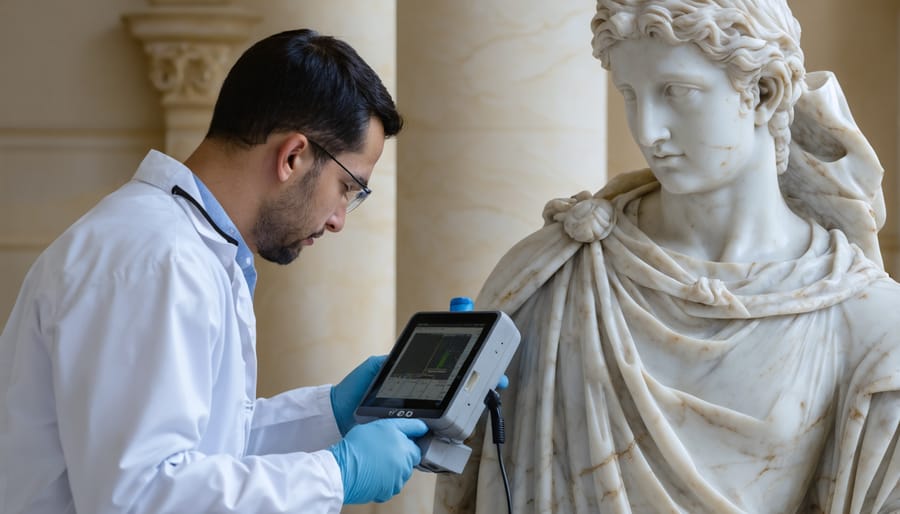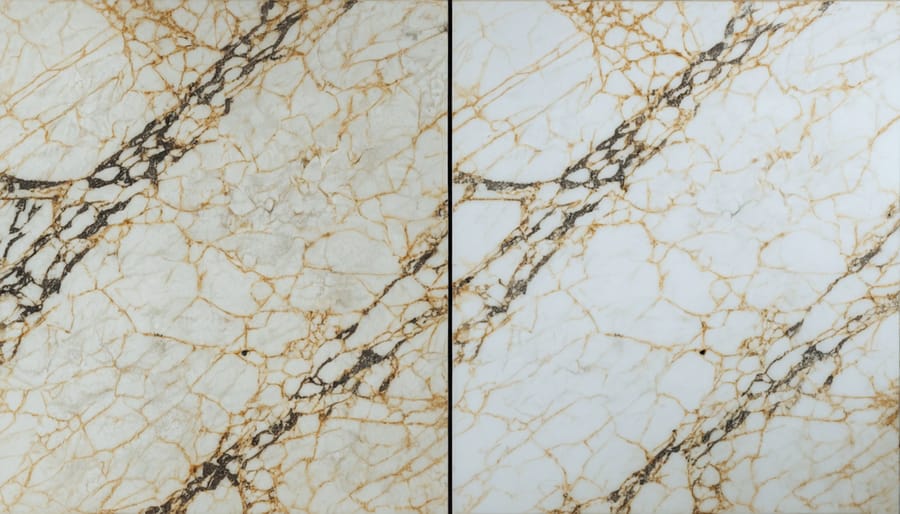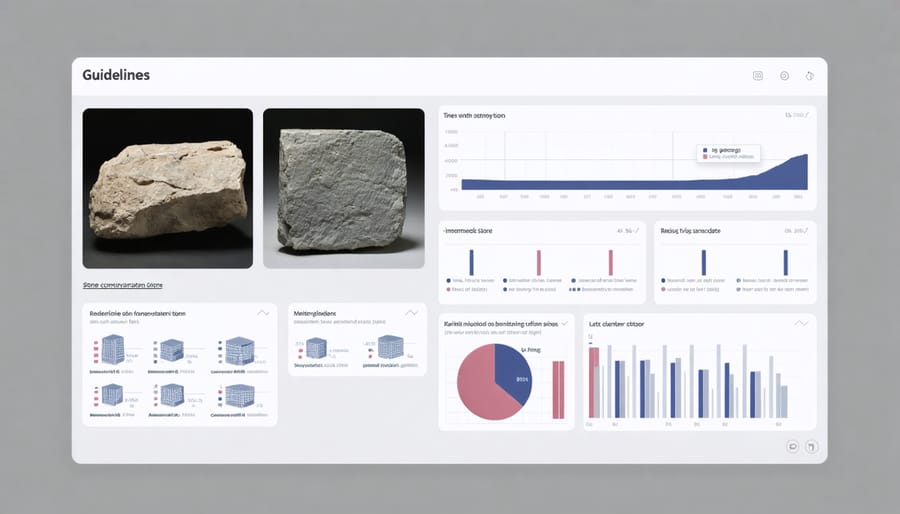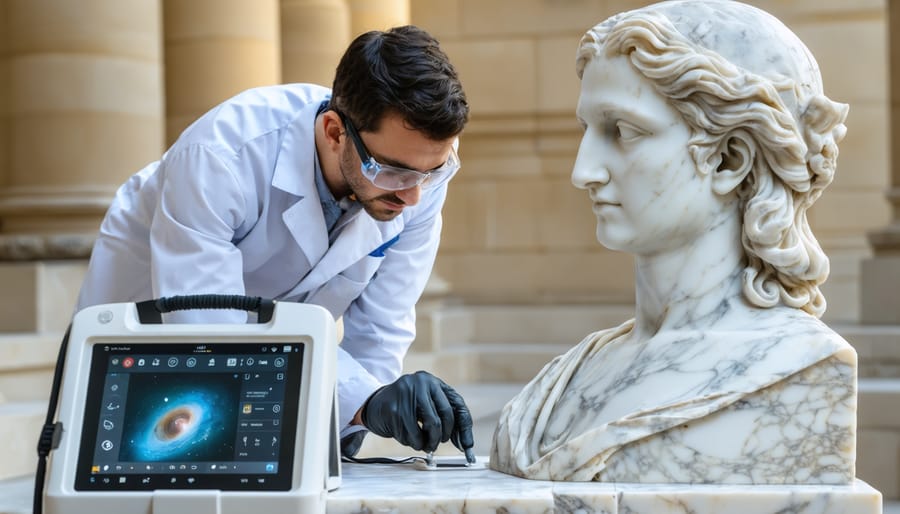Modern stone conservation demands a precise balance of scientific analysis and hands-on intervention. Advanced documentation technologies, including 3D laser scanning and photogrammetry, now capture microscopic surface details and structural conditions with unprecedented accuracy. These digital tools, combined with traditional marble preservation techniques, enable conservators to develop targeted treatment strategies that address both immediate deterioration and long-term preservation needs.
Professional conservation methods have evolved significantly, incorporating innovative materials like nano-lime consolidants and biomineralization treatments that strengthen degraded stone while maintaining its historical integrity. Environmental monitoring systems track temperature, humidity, and pollutant levels in real-time, allowing preventive measures to be implemented before damage occurs. This data-driven approach, coupled with non-invasive testing methods, ensures that conservation efforts preserve not only the physical structure but also the cultural significance of stone artifacts and buildings.
The field’s commitment to reversibility and minimal intervention has sparked development of cutting-edge protective coatings and cleaning techniques that respect original surface qualities while providing robust protection against environmental threats. These advancements represent a crucial bridge between traditional craftsmanship and modern scientific understanding.
Digital Mapping and Documentation Technologies
3D Laser Scanning Applications
3D laser scanning has revolutionized stone conservation by providing unprecedented accuracy in documenting and monitoring deterioration patterns. This advanced technology uses precise laser measurements to create detailed three-dimensional models of stone surfaces, capturing even microscopic changes over time. When combined with photogrammetry in conservation, these scans offer comprehensive baseline documentation for preservation projects.
The scanning process involves emitting millions of laser points that measure the exact geometry of stone surfaces, creating what’s known as a “point cloud.” This data can detect surface loss, erosion patterns, and structural deformations with sub-millimeter accuracy. Conservators can compare scans taken at different times to track deterioration rates and identify areas requiring immediate attention.
Real-world applications include monitoring historic facades, archaeological sites, and sculptural elements. For example, the scanning of medieval cathedral gargoyles has helped conservators identify early signs of weathering before visible damage occurs. This predictive capability allows for proactive rather than reactive conservation strategies, ultimately extending the life of valuable stone artifacts and structures.

Digital Documentation Systems
Modern conservation efforts rely heavily on digital documentation systems to maintain precise records and track preservation activities. These specialized software solutions enable conservators to create detailed condition reports, document treatment procedures, and monitor changes in stone artifacts and structures over time.
Industry-standard databases like The Conservation Information Management System (CIMS) allow teams to store high-resolution photographs, 3D scans, and treatment histories in a centralized location. This digital approach ensures that all stakeholders have access to accurate, up-to-date information about conservation projects.
Mobile applications now facilitate on-site documentation, allowing conservators to input data, take photos, and update records in real-time. These tools often include features for mapping damage patterns, scheduling maintenance, and generating comprehensive reports.
Cloud-based systems have become particularly valuable for large-scale projects, enabling collaboration between multiple conservation teams and institutions. They provide secure backup of critical documentation while allowing for easy sharing of information with clients, architects, and other professionals involved in preservation efforts.
Regular digital documentation also helps establish benchmarks for monitoring deterioration rates and evaluating the effectiveness of conservation treatments over time.
Cutting-Edge Cleaning Methods
Laser Cleaning Technology
Laser cleaning represents one of the most advanced stone cleaning techniques available today, offering unprecedented precision and control in conservation work. This non-contact method uses focused light energy to remove unwanted surface materials while preserving the underlying stone substrate.
The technology works by delivering short, intense pulses of laser light that target specific contaminants or degradation layers. When the laser beam hits the surface, it causes the unwanted material to vaporize or break down without damaging the stone beneath. This selective cleaning process is particularly valuable for delicate historic surfaces where traditional mechanical or chemical methods might prove too aggressive.
Conservation professionals can adjust various parameters, including wavelength, pulse duration, and energy density, to achieve optimal results for different stone types and contamination levels. The process is especially effective for removing dark crusts, biological growth, and atmospheric pollutants that often plague historic stone structures.
One of the key advantages of laser cleaning is its self-limiting nature – once the darker contaminant layer is removed, the lighter stone surface reflects more laser energy, naturally preventing over-cleaning. This built-in safety feature, combined with real-time monitoring capabilities, makes laser cleaning particularly suitable for irreplaceable architectural elements and sculptural details.

Micro-abrasive Systems
Micro-abrasive systems represent a significant advancement in stone conservation, offering precise and controlled cleaning methods for delicate stone surfaces. These systems use fine particles, typically ranging from 5 to 150 microns, propelled by compressed air or inert gases to gently remove surface contaminants without damaging the underlying stone.
The technology allows conservators to adjust various parameters, including particle size, pressure, and flow rate, ensuring optimal cleaning results for different stone types and conditions. Common abrasive materials include aluminum oxide, glass beads, and calcium carbonate, each selected based on the specific cleaning requirements and stone characteristics.
One of the key advantages of micro-abrasive cleaning is its ability to remove stubborn deposits while preserving the stone’s patina and surface detail. This selective cleaning approach is particularly valuable when working with historically significant structures or decorative architectural elements where maintaining original surface features is crucial.
Conservators typically begin with test patches in inconspicuous areas to determine the most appropriate settings and materials. Modern systems often incorporate moisture control mechanisms to minimize dust dispersion and include vacuum attachments that collect spent abrasive material, making the process environmentally friendly and safer for operators.
When properly executed, micro-abrasive cleaning can effectively remove biological growth, atmospheric soiling, and other surface deposits while maintaining the stone’s integrity and historical value.
Advanced Consolidation Techniques
Nano-materials in Conservation
Nanomaterials represent a groundbreaking advancement in stone conservation, offering innovative solutions for preserving historical and contemporary stone structures. These microscopic particles, typically ranging from 1 to 100 nanometers, can penetrate deep into stone surfaces, providing superior protection against environmental deterioration.
Silica nanoparticles, one of the most widely used materials, create an invisible protective barrier that maintains the stone’s natural appearance while enhancing its resistance to water damage and chemical erosion. Calcium hydroxide nanoparticles, also known as nanolime, are particularly effective for consolidating deteriorated limestone and marble, helping to rebuild the stone’s internal structure without altering its original characteristics.
Recent developments include titanium dioxide nanoparticles, which provide self-cleaning properties through photocatalytic effects, breaking down organic pollutants when exposed to sunlight. These applications are especially valuable in urban environments where air pollution poses a significant threat to stone facades.
Conservation specialists now employ nanoparticle-based consolidants and water repellents that offer deeper penetration and more uniform coverage compared to traditional treatments. These advanced materials have shown remarkable success in stabilizing weathered stone surfaces while maintaining vapor permeability, crucial for the stone’s long-term preservation.
Biomineralization Treatments
Biomineralization treatments represent a groundbreaking approach to stone conservation that harnesses natural biological processes to strengthen and protect deteriorating stone surfaces. This method mimics nature’s own mechanisms by using specialized bacteria to precipitate calcium carbonate within the stone’s pore structure.
The process begins with the application of carefully selected bacterial strains along with a nutrient solution to the stone surface. These bacteria metabolize the nutrients and create conditions that trigger the formation of new mineral deposits, primarily calcite, which effectively binds loose particles and fills micro-cracks within the stone.
What makes biomineralization particularly attractive is its compatibility with the original stone material and its environmentally friendly nature. Unlike traditional chemical consolidants, these treatments produce minerals that are chemically and structurally identical to those naturally present in the stone.
Field studies have shown impressive results, with treated surfaces displaying increased mechanical strength and improved resistance to weathering. Notable applications include the restoration of historic limestone facades and marble sculptures, where the treatment has successfully stabilized deteriorating surfaces without altering the stone’s appearance or natural properties.
However, the effectiveness of biomineralization depends on various factors, including stone type, environmental conditions, and proper application procedures. Regular monitoring and maintenance remain essential for long-term success.
Preventive Conservation Strategies
Environmental Monitoring Systems
Modern environmental monitoring systems play a crucial role in implementing effective preventive conservation measures for stone structures. These sophisticated systems combine sensors, data loggers, and analysis software to track various environmental factors that affect stone deterioration.
Key parameters monitored include temperature fluctuations, relative humidity, air pollution levels, and moisture content within the stone. Advanced sensors can detect subtle changes in these conditions, providing early warning signs of potential damage. Real-time monitoring allows conservators to respond quickly to environmental threats before significant deterioration occurs.
Wireless sensor networks now enable comprehensive monitoring of large structures or entire historic sites. These networks transmit data to central monitoring stations where specialized software analyzes trends and generates alerts when conditions exceed predetermined thresholds. Cloud-based platforms make this vital information accessible to conservation teams remotely, facilitating prompt decision-making.
Recent developments include smart sensors that can detect specific chemical compounds known to accelerate stone decay, and thermal imaging systems that identify hidden moisture problems. Integration with weather forecasting data helps predict and prepare for environmental challenges, while machine learning algorithms improve the accuracy of deterioration predictions over time.
By maintaining detailed environmental records, these systems also contribute valuable data for long-term conservation planning and research, helping preserve our stone heritage for future generations.

Protective Coating Technologies
Modern protective coatings represent a significant advancement in stone conservation, offering innovative solutions for preserving historical structures and contemporary installations alike. These treatments create an invisible barrier that shields stone surfaces from environmental damage while maintaining their natural appearance and breathability.
Nano-technology based sealers have emerged as a leading solution, featuring molecules small enough to penetrate deep into the stone’s pores. These advanced formulations provide superior protection against water infiltration, oil-based stains, and UV radiation damage, while allowing the stone to maintain its natural vapor permeability.
Fluoropolymer-based coatings offer exceptional durability and chemical resistance, making them ideal for high-traffic areas and exposed outdoor installations. These treatments create a molecular bond with the stone surface, providing long-lasting protection without altering the material’s aesthetic properties.
Recent developments include self-cleaning coatings that utilize photocatalytic properties. When exposed to sunlight, these treatments break down organic matter and pollutants, helping maintain the stone’s appearance while reducing maintenance requirements.
For sensitive historical restorations, conservators now employ reversible protective treatments. These specialized coatings can be safely removed if needed, allowing future conservation work without risking damage to the original stone surface.
Before applying any protective coating, proper surface preparation and compatibility testing are essential to ensure optimal performance and prevent potential adverse reactions with the stone material.
The evolution of stone conservation techniques represents a remarkable fusion of traditional craftsmanship and cutting-edge technology. As we’ve explored throughout this article, modern conservation methods have revolutionized our ability to preserve historical structures and maintain contemporary stone installations with unprecedented precision and effectiveness.
The impact of these innovations extends far beyond mere preservation. Digital documentation technologies now allow us to create detailed records of stone artifacts and buildings, ensuring their legacy for future generations. Advanced cleaning methods, combined with sophisticated consolidation treatments, have dramatically improved our capacity to address deterioration while maintaining the authentic character of stone surfaces.
Looking ahead, the future of stone conservation appears increasingly promising. Emerging technologies like nanomaterials and bio-based treatments are showing exceptional potential for more sustainable and less invasive conservation solutions. The integration of artificial intelligence and machine learning is also beginning to transform how we monitor and predict stone degradation patterns.
However, the true success of stone conservation lies in the balanced application of these innovations. The most effective approaches combine modern technology with time-tested traditional methods, ensuring that our cultural heritage remains protected while embracing the advantages of scientific advancement.
As we continue to develop new conservation techniques, the focus remains on creating more sustainable, efficient, and sensitive methods to protect both historical and contemporary stone structures for generations to come.










